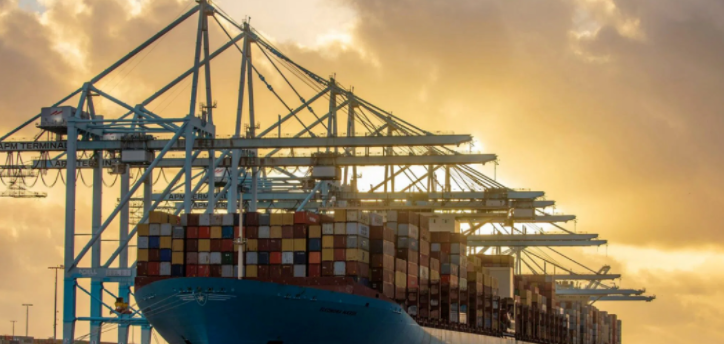Although cargo volumes are cooling, demand for newbuilding orders from major carriers continues to soar. According to Alphaliner data, about 900 container ships are currently being built at shipyards around the world, with a combined capacity of 6.8 million TEU. The combined capacity of these new container ships exceeds the combined capacity of the existing fleets of COSCO, Hapag-Lloyd and Evergreen.
Most of these newbuildings are expected to be delivered in 2023 and 2024, at 319 and 263, respectively, according to Danish Ship Finance.
The surge in newbuilding orders reflects a market in which container shipping companies earn a lot of revenue today. Part of the reason for those profits is from post-pandemic supply chain disruptions.
The resale value of container ships has soared, and an unusually small number of container ships have been scrapped. A recent monthly report from VesselsValue showed that the number of scrapped container ships fell from 171 in 2019 and 2020 combined to 11 in 2021, and is currently zero in 2022. This shows that the container shipping industry is struggling to fill the capacity shortfall by keeping every ship that may sail on track.
While the current market environment is favorable for the container shipping industry, financial analysts predict that global economic growth will slow from 2023. As a result, with a large number of new container ship deliveries in 2023, it could put pressure on the industry's earnings. The risk of overcapacity is expected to increase as volumes are not growing fast enough to absorb current orders for new ships.

Additionally, most shipping companies are expected to undergo fleet renewal as the International Maritime Organization (IMO) EEXI (Energy Efficiency Index for Existing Ships) and CII (Carbon Intensity Index) regulations are expected to come into force in January 2023.
Hence, "fuel selectivity" became popular. According to Clarkson, nearly 40% of orders are currently for ships capable of using alternative fuels, particularly LNG. Container ships lead the demand for LNG-fuelled ships. Classification society DNV's Alternative Fuels Insights (AIF) estimates that 30 new orders for LNG-fuelled vessels were placed in May alone, bringing the total number of newbuilding orders for 2022 to 151.
While the implementation of IMO environmental regulations may reduce vessel supply across the shipping industry, it is unlikely to absorb excess container ship capacity until 2023 or 2024 at the earliest.
While the shipping industry may have taken a long-term approach to securing capacity through newbuilding orders, tackling port congestion could free up large numbers of ships, at least in the short term. A recent study by the Royal Bank of Canada concluded that one in five of the world's container ships are stuck in congestion at major ports.
Lars Jensen, CEO of Vespucci Maritime, a consultancy specializing in container shipping, said: “There are only two ways to alleviate the capacity shortage in 2022. First, by reducing port congestion and reducing vessel delays and waiting times; and second, by reducing Consumer spending to reduce demand. If neither factor materializes, capacity shortages will continue to support high freight rates this year.”
If ship wait times return to normal and consumer demand starts to slow, 2023 could herald the start of a glut, as current orders for new containerships will be delivered in a cooling container market.
Previous:Freight rates continue to decline, is it temporary? Or a harbinger of weak demand?
Next:Maersk's latest marine market outlook forecast